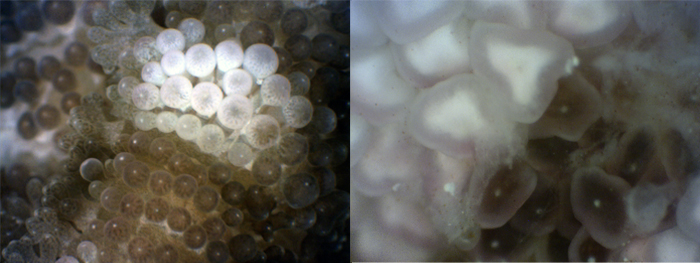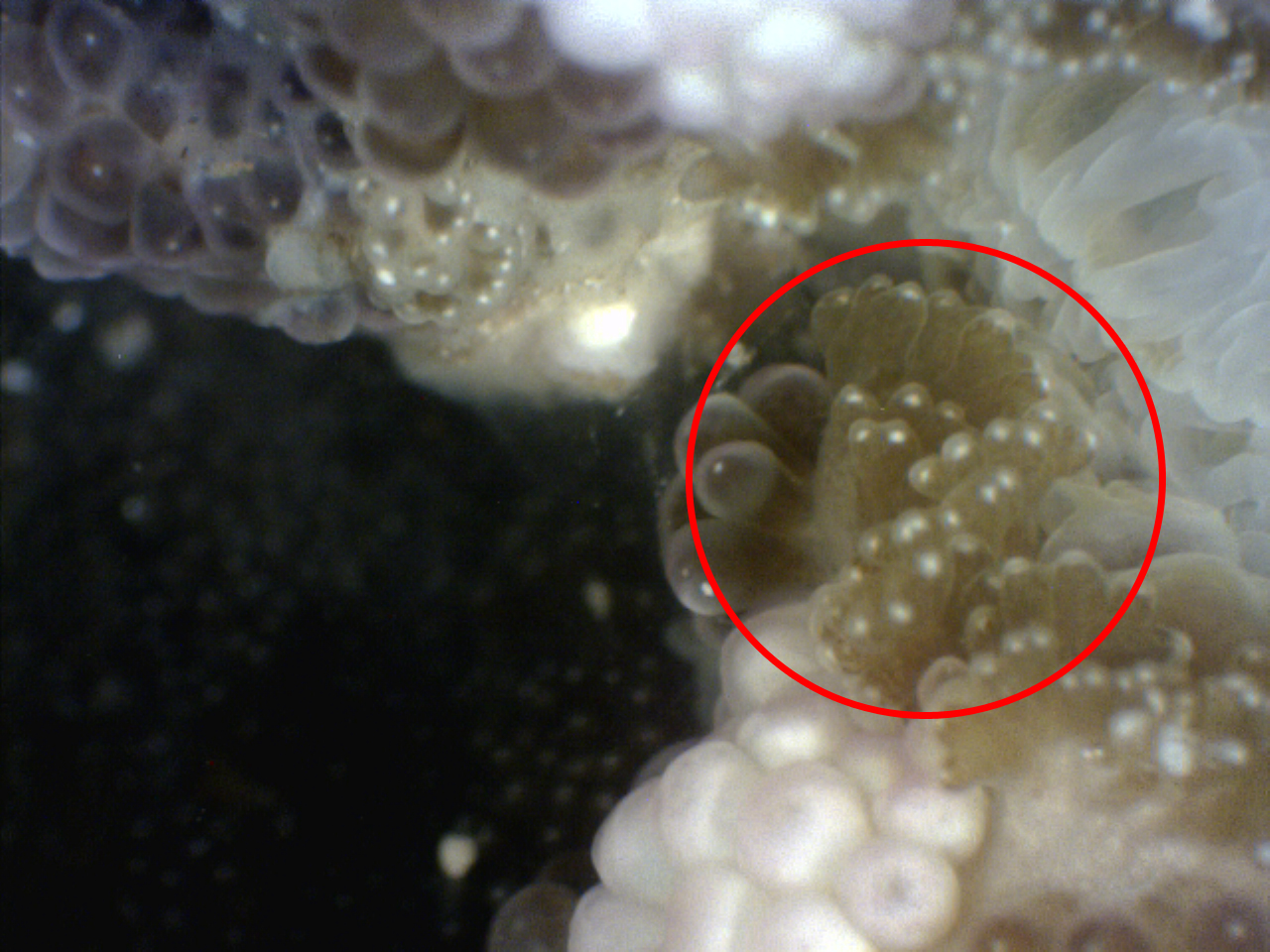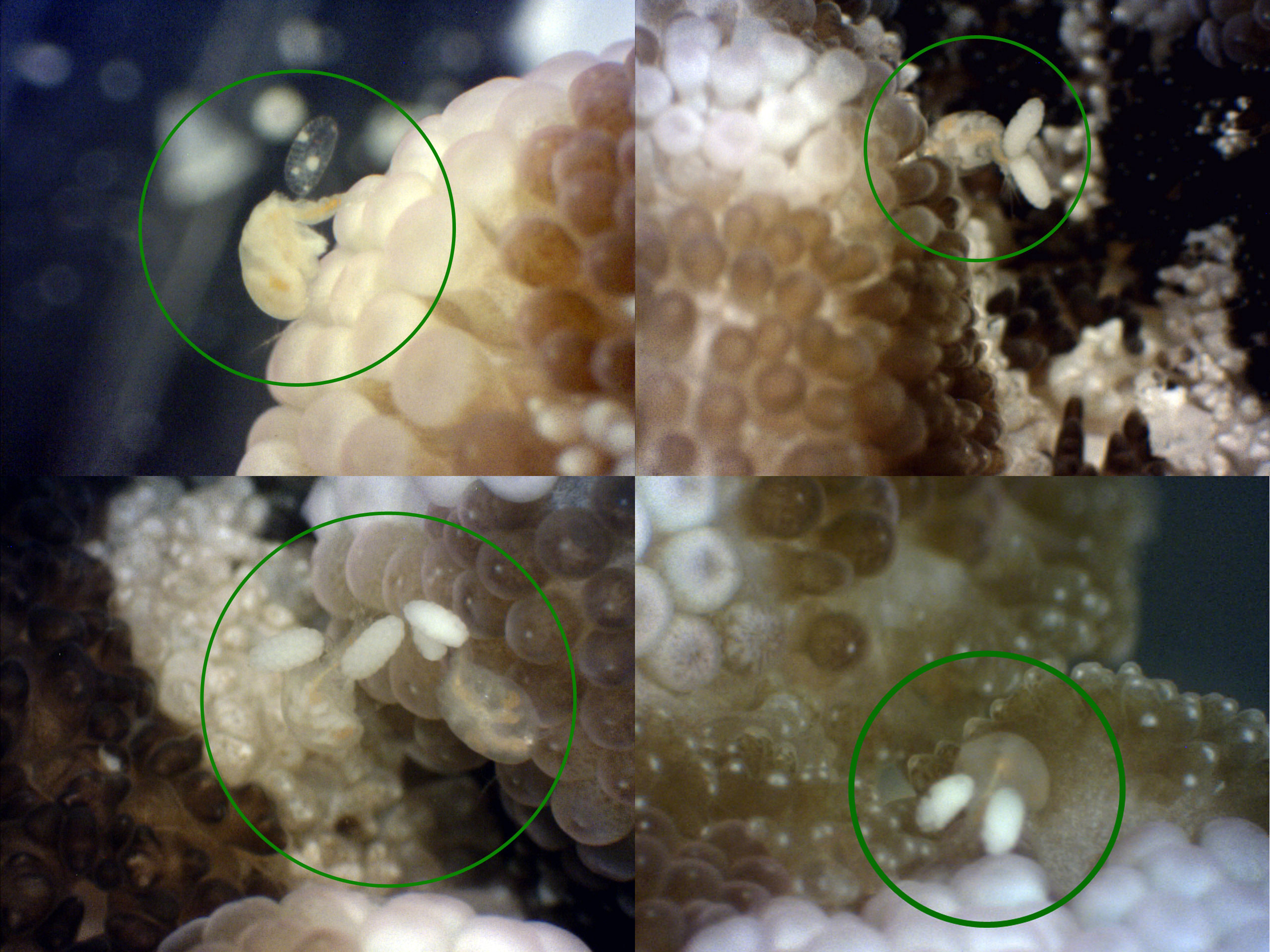Physical Description
Cryptodendrum adhaesivum can grow up to a diameter of 75cm1 with a 30cm diameter oral disc when expanded2. The unlobed oral disc3 is flat to wavy when expanded, but can be undulating4, particularly so in strongly contracted individuals3. It is entirely covered in extremely short (to 5mm in length) and sticky tentacles that are densely packed together, except around its mouth, which gives it a furry-looking appearance1,2. Although the tentacles are extremely sticky, they do not detach with contact, unlike some other anemones such as Stichodactyla haddoni1.
There are three differently shaped tentacles:
1) short with a narrow stalk and branched into five or more short finger-like projections at the tip in the center of the oral disc1,2

Tentacles are narrow and branched at the tip into short finger-like projections (left); close-up of a few tentacles under a dissecting microscope (right)
2) simple elongate stalks that end in a bulb about 0.1cm in diameter near the edge on the outer rim of the disc1,2

Tentacles have tips that end in bulbs (left); close-up of bulb-shaped tips under a dissecting microscope (right)
3) in addition, bordering the extreme margin of the oral disc is another type of tentacle that looks similar to those in the center but with fewer branches1,2. They are sometimes referred to as 'verrucae'2,3.

Tentacle is branched like those in the oral disc, but with less branches
C. adhaesivum occurs in a wide variety of colors1. The elongate bulbs are always differently colored to the tentacles in the center, and the tentacle stalks and tips may also be of different colors. Some of the color combinations include yellow and pink, blue and grey, and green and brown, and there may be differently colored tentacles occurring in patches amongst the predominant color. The mouth area may take on a bright color, for instance fuchsia, yellow, green or white2.
The column of C. adhaesivum is contractile but it has been noted to be as long as or longer than the oral disc width. It is also firm but will become wrinkled when contracted. The mouth is central and small, and is usually accompanied by two symmetrical siphonoglyphs3 (see Anatomy & Physiology).
Interestingly, many copepods were found living on this C. adhaevisum individual. Given they were unharmed by the nematocysts (see Defense Mechanisms), they could possibly have been ectoparasites. 
Various copepods observed darting about on the oral disc and tentacles of C. adhaesivum
1Erhardt & Knop 2005
2Wallace & Richards 2007
3Dunn 1981
4Fautin & Allen 1992
|